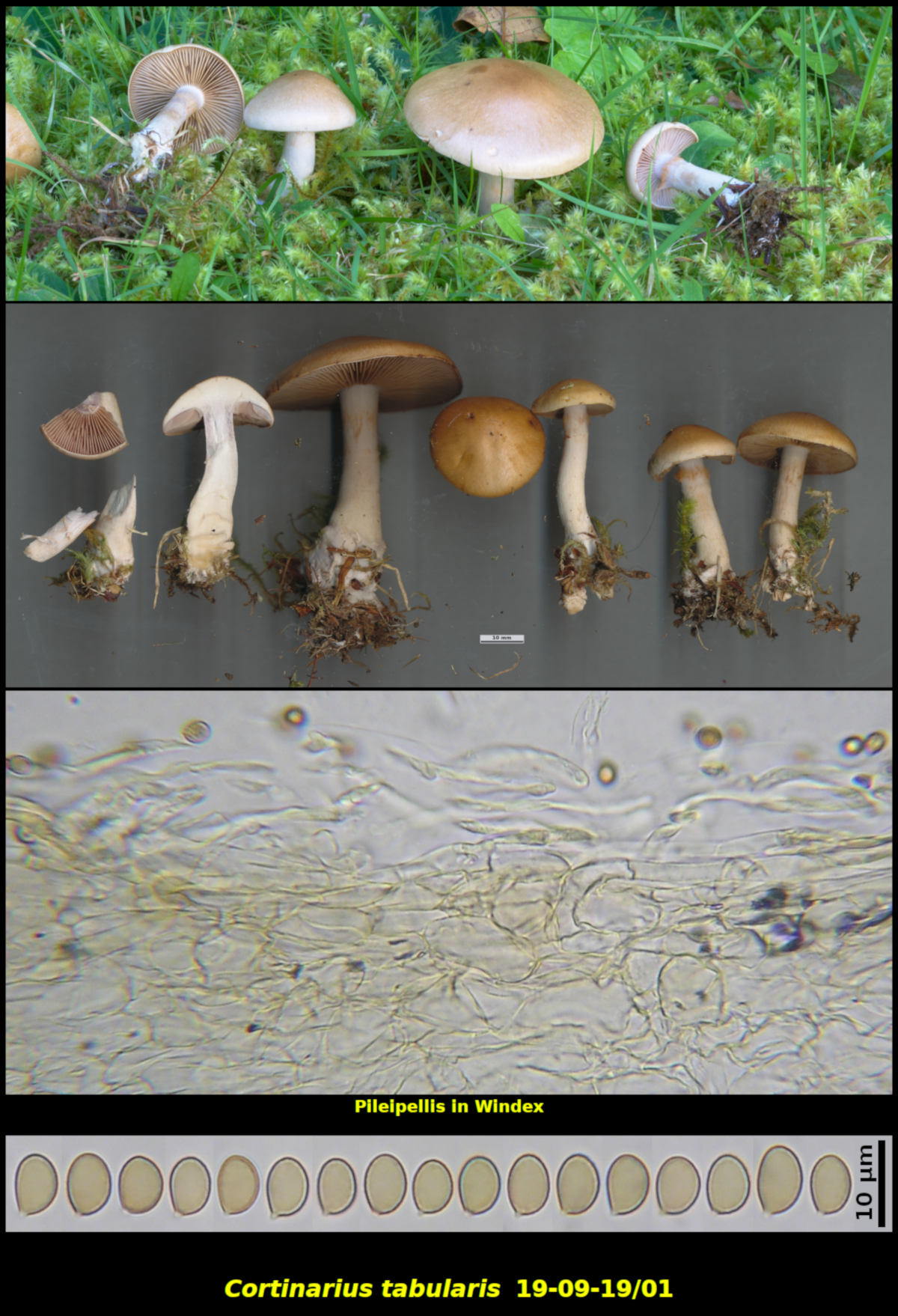Fleshy Fungi of New Brunswick >>
Cortinarius tabularis
Cortinarius tabularis (Fr.) Fr.

Gregarious (6) in a Rhytidiadelphis carpet in a rural lawn, associated with Betula cordifolia and (at a greater distance) Abies balsamea – Little Lepreau, New Brunswick (19-09-19/01).
Basidiospores orange brown (HSV30:70:70-80) in spore print, subglobose to ellipsoidal, finely verrucose, weakly dextrinoid, 6.2-8.0 x 4.5-5.3 µm Q = 1.27-1.54 (average[31]: 6.9 x 5.0 µm, Q = 1.40). Hymenial cystidia lacking. Basidia 4-spored, clamped at the base. Pileipellis a thin hyaline ixocutis over a thicker layer of short brown cells.
Cortinarius tabularis is characterized by its pale brown pileus, greyish yellow to white universal veil and pale greyish brown to nearly white lamellae that may have a slight violaceous tinge. The pileus is sometimes reported to be viscid or sticky in wet weather, although Collection 19-09-19/01 was collected during a dry period and the field notes do not record this. However, cross sections of the pileipellis reveal a distinctly gelatinous surface layer that could indeed become viscid when wet. It is included by most authors in the section Anomali of Cortinarius, a group generally characterized by the presence of subglobose basidiospores. It is similar to C. anomalus, differing mainly in its paler colour and viscid pileus when wet. Collection 19-09-19/01 differs from most other collections of C. tabularis in having rather more ellipsoidal spores, although at least some of them fit the expected shape. Dima et al. (Mycol Progress 15: 903-919. 2016) reported that collections of C. tabularis have more ellipsoidal spores than other species of section Anomali. Funga Nordica and Soop (Cortinarius in Sweden, 2005) state that C. tabularis is usually associated with species of Betula.
Photograph: D. Malloch (19-09-19/01).